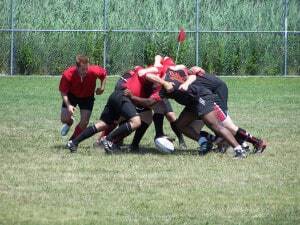Focusing the Daily Scrum
/*Focusing the Daily Scrum

The daily Scrum, or standup, is an important ceremony in agile. It is the team’s opportunity to meet, discuss accomplishments and the daily plan, and identify critical issues impeding the progress of an iteration, or sprint. It should not last longer than 15 minutes. The following are three key questions recommended by the Scrum Guide to ask each team member at each daily Scrum:
- What did I do yesterday that helped the Development Team meet the Sprint Goal?
- What will I do today to help the Development Team meet the Sprint Goal?
- Do I see any impediment that prevents me or the Development Team from meeting the Sprint Goal?
The ScrumMaster calls the daily Scrum and keeps it focused on iteration goals. Despite the ScrumMaster’s skill in leading this meeting, we have seen that it often morphs into a typical status meeting. If the daily Scrum is not working to keep the team focused on delivery goals, this issue can have lasting repercussions throughout the iteration. In addition, if team members use the time to brainstorm solutions, the meetings may quickly go over their allotted time, causing frustration. While solution discussion is important, it usually requires more than 15 minutes, so solutions are best discussed in outside meetings.
A discussion earlier in 2015 from the Agile and Lean Software Development group on LinkedIn generated over 60 comments from agile practitioners who had many alternatives for questions to ask during the daily Scrum. The goal of each alternative was to help teams focus their daily Scrum while still keeping true to its purpose, which is to help the team stay on track.
One contributor, Michael Küsters, suggested a device called “DONE,” or “Delivered,” “Obstacles/Impediments,” and “Next,” to focus the scrums. Instead of team members reporting progress individually, the team reports on the past day’s collective action and what value it delivered to the customer. The team then focuses on the additional value it will deliver to the customer from today’s action. By using this device, teams can start with the present and work toward the future while keeping impediments visible.
NK Shrivastava, RefineM CEO and Agile Coach, posed the following alternatives to the three questions:
- What did I achieve since yesterday?
- What do I plan to achieve today?
- What help do I need to achieve my goal of the day?
The first question is meant to be focused on the iteration goal rather than serving as a “laundry list” of tasks accomplished. The second question lets each team member express his or her understanding of the iteration goal, which is valuable because that understanding may need to be corrected. The third question invites others to help with any issues and barriers identified, allowing participants to get help while keeping solution discussion out of the daily Scrum.
Some participants highlighted the importance of how the questions are asked in addition to what questions are asked. Dan Rice from Rally Software recommended concentrating on the stories and tasks in priority order and having team members involved in each story or task communicate progress. Doing this instead of asking questions of team members in a circle keeps the focus on what needs to be finished to deliver value to the customer.
Finally, contributor Yuval Yeret created an interesting take on the questions by suggesting a program to generate alternative questions. Using a tool to randomize the questions can provide variety and help the team find questions they like. Once the team has found an ideal mix, stick with that set for consistency. Mixing up questions too often may cause confusion and cause key areas of concern to be overlooked.
The major takeaway from this discussion is that individual contributions need to be linked to the overall iteration goal to keep the focus on delivering the highest possible customer value. If the three standard questions are not working, don’t be afraid to try different questions. Just make sure that by the end of each daily scrum / standup, the team has a clear idea of what they need to do to deliver on the goal.
Whether the team sticks with the basic three questions or tries other questions, one question should always be in mind in order to focus the daily Scrum: how do we reach our goal? Keeping this question in mind will help your team get out of the woods and deliver successful sprints.
If you’re still looking for help focusing your daily Scrums, we’re happy to offer guidance. Our Agile Transformation services can help your agile teams get on the right track with daily Scrums and other important pieces of agile implementation.